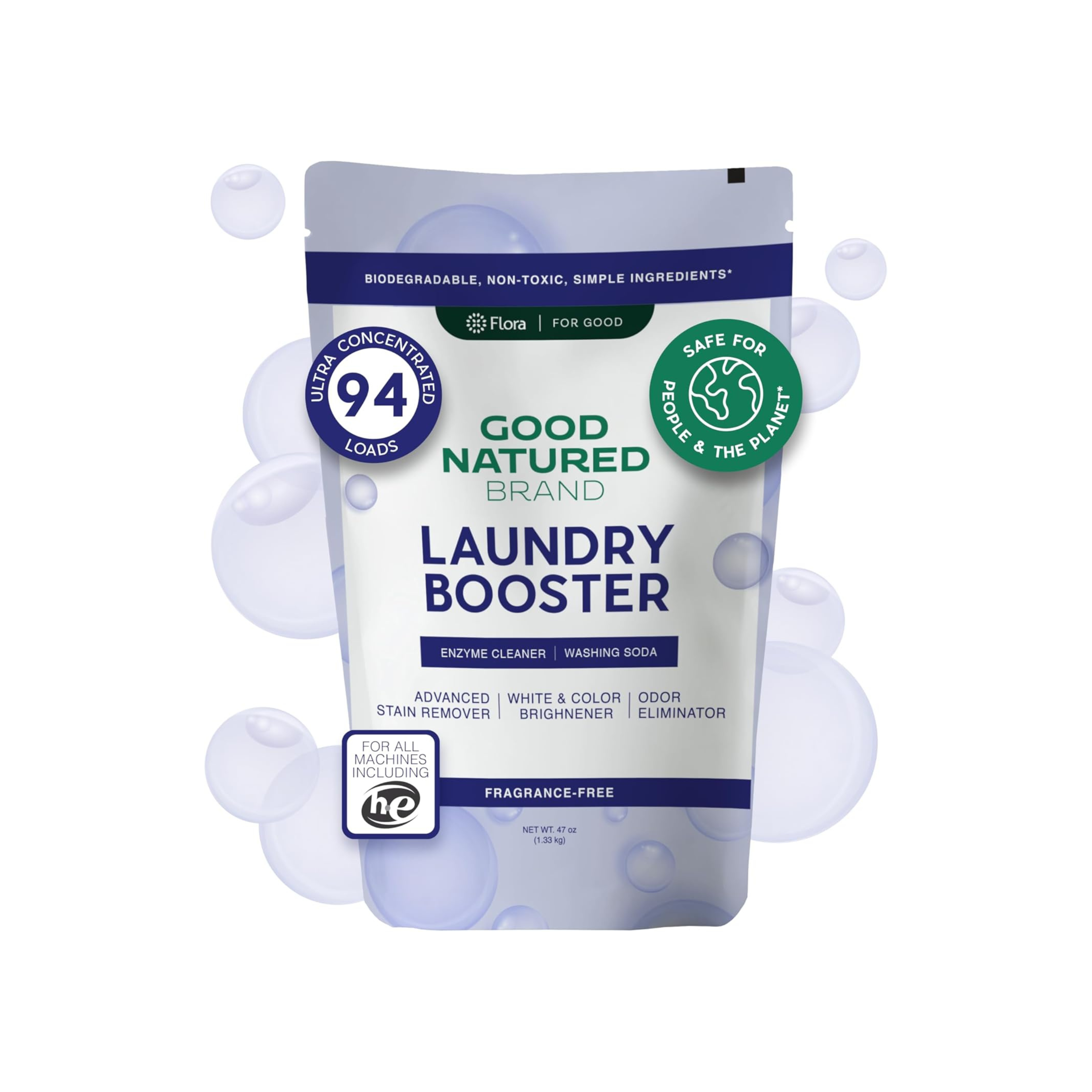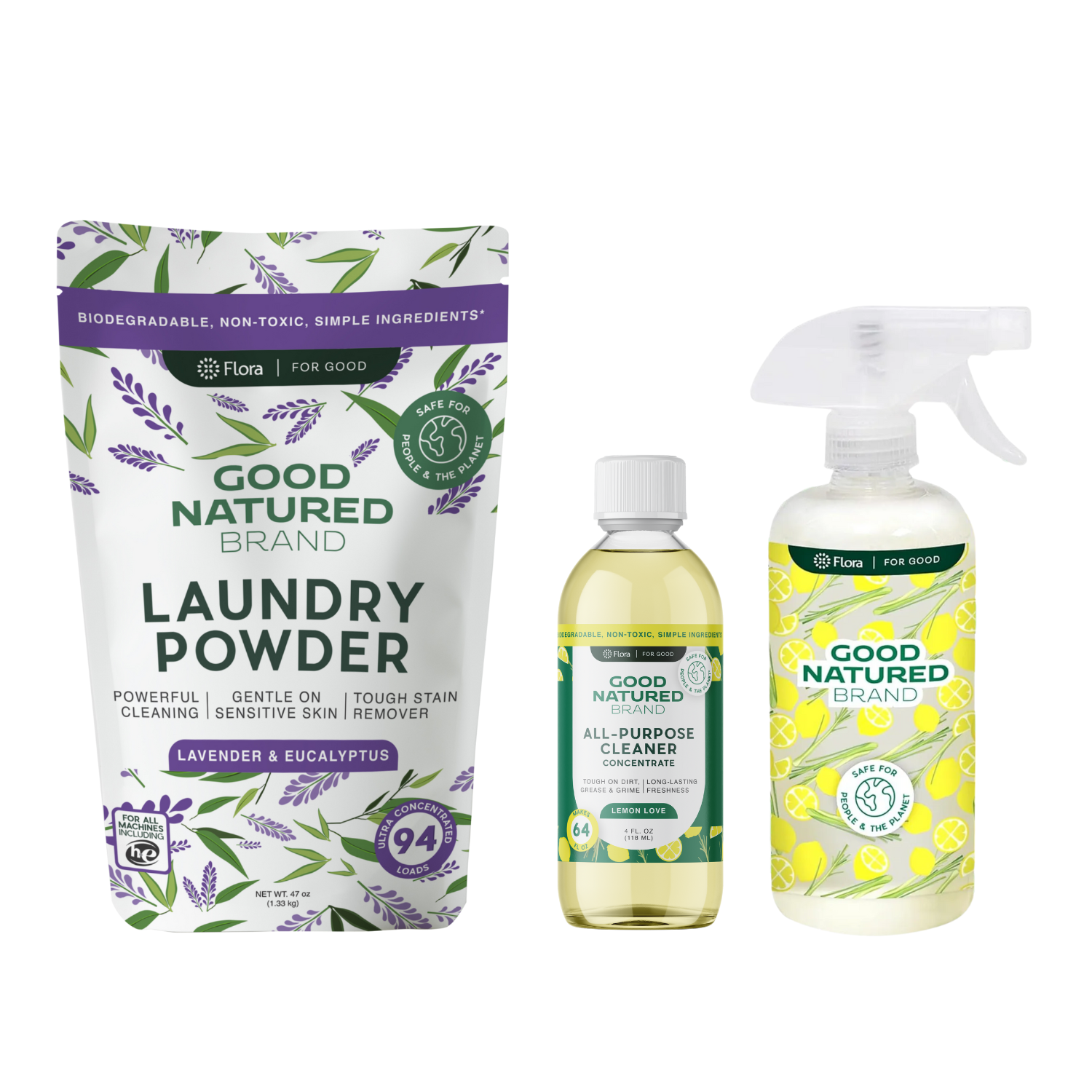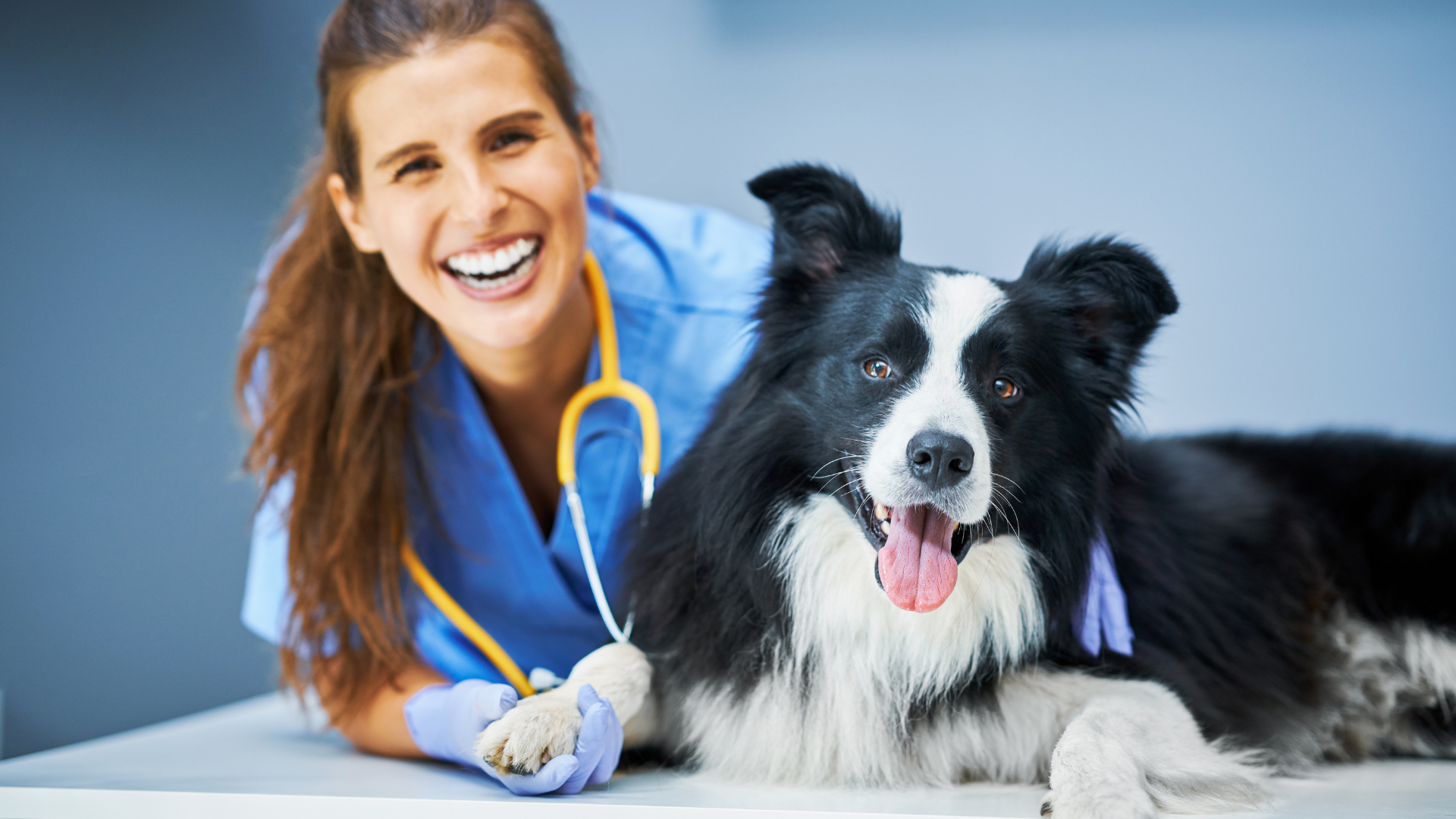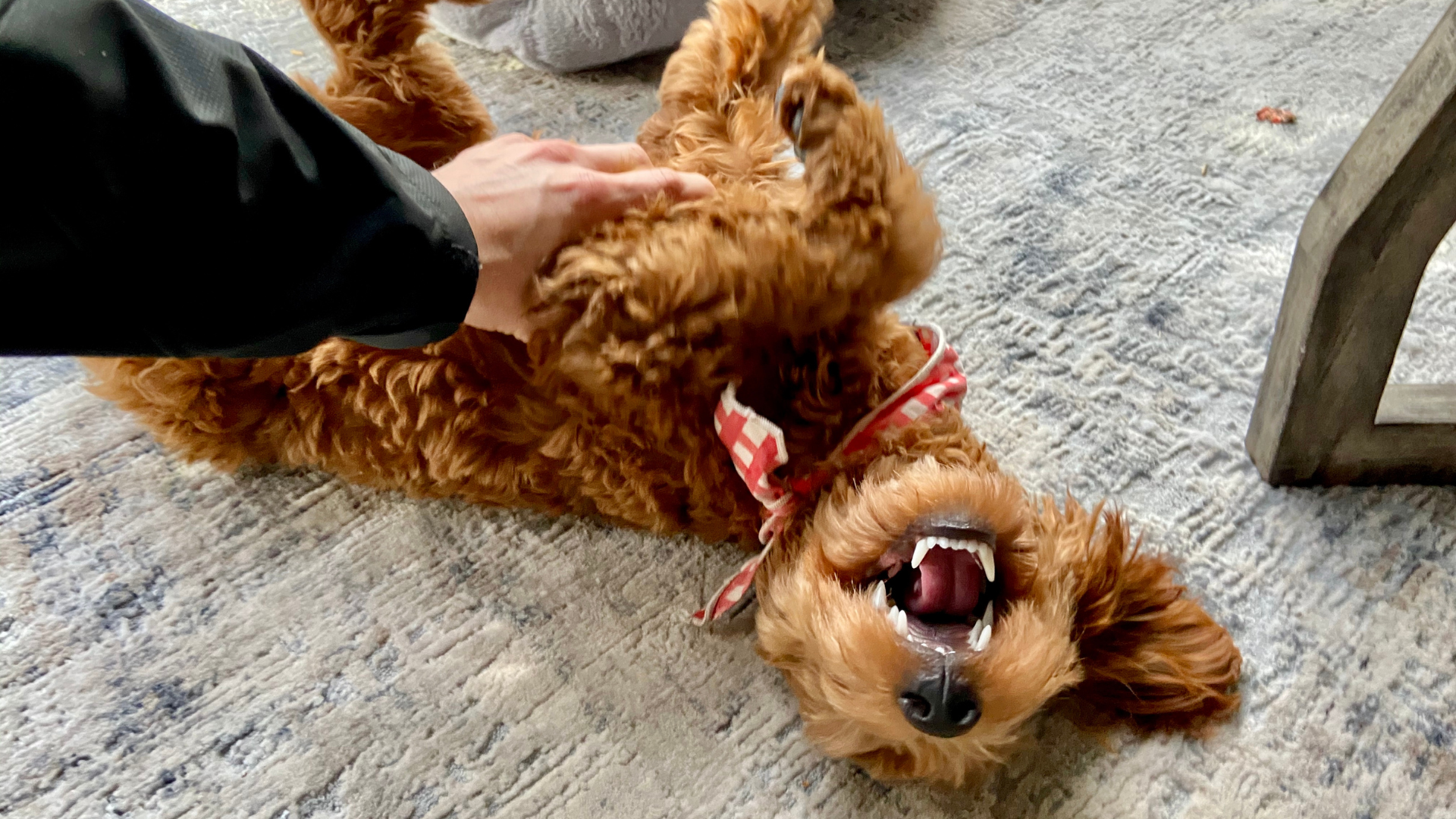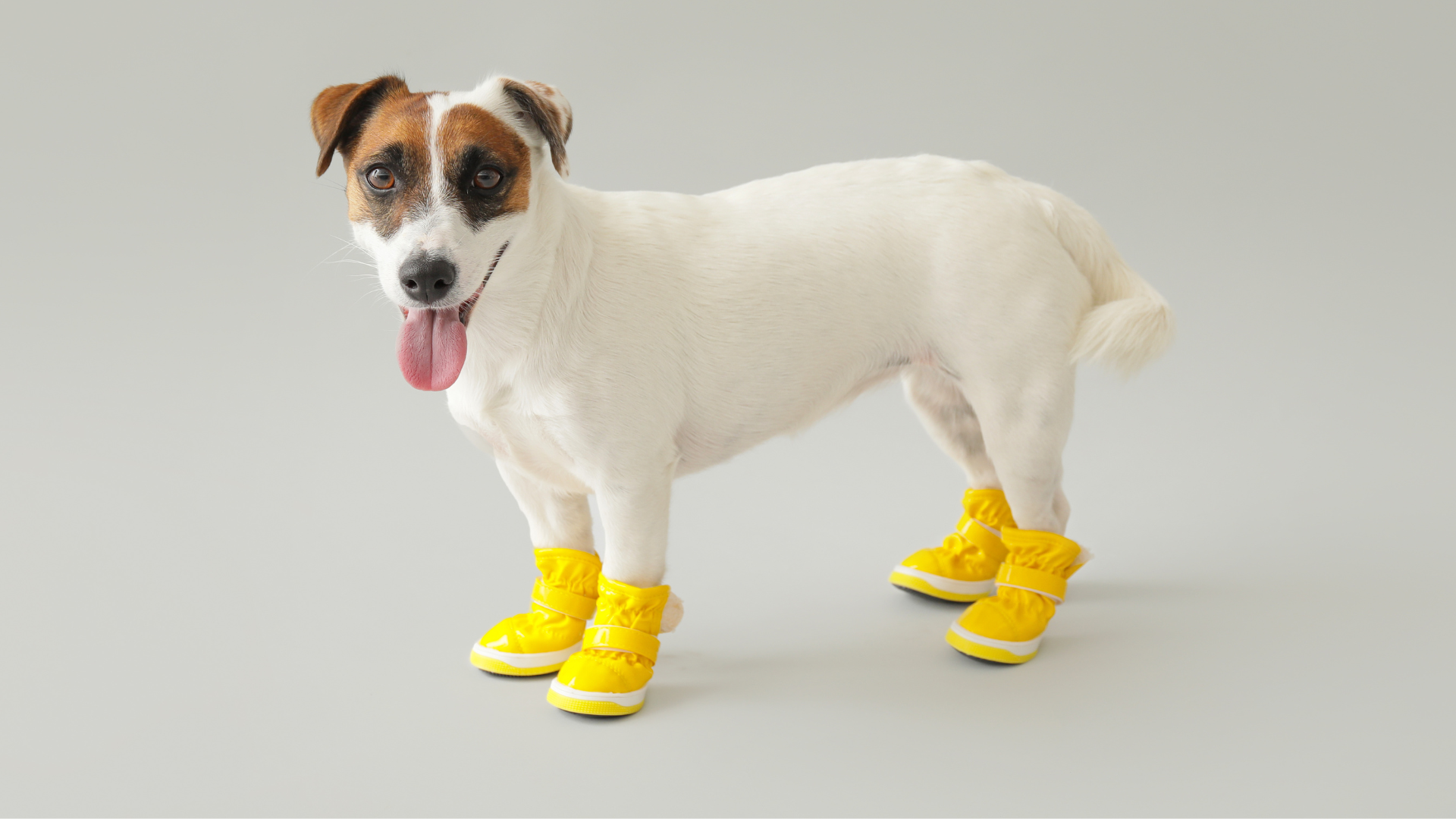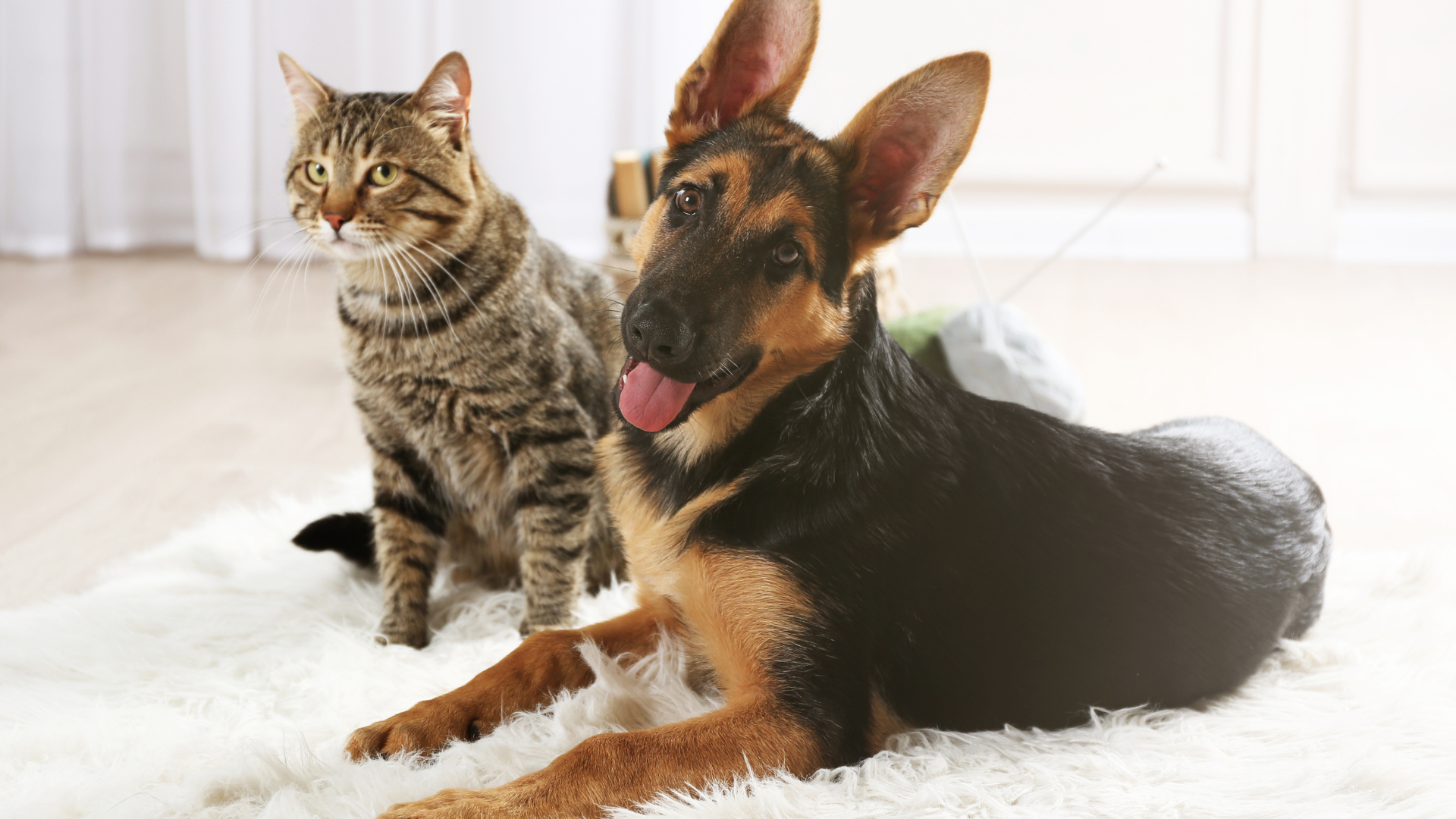For millions living with diabetes, managing blood sugar isn’t just about numbers—it’s about safety, independence, and peace of mind. While technology like continuous glucose monitors (CGMs) has revolutionized diabetes care, many people are turning to an unexpected yet incredibly reliable companion for help: their dog. Yes, some dogs can be trained to detect low blood sugar before it becomes dangerous. These diabetic alert dogs use their extraordinary sense of smell to identify subtle changes in a person's body chemistry and alert them before symptoms escalate.
If you’re a pet parent managing diabetes, this guide will walk you through how to train your dog to detect low blood sugar, the science behind medical detection pets, and whether this path might be right for you. From understanding scent training to preparing sample materials and reinforcing positive behaviors, we’ll break down everything you need to know in simple, actionable steps.
Along the way, we’ll also share insights not just for your health, but for your home—because creating a safe and healthy space for you and your dog matters. That includes tips like using pet-safe products such as Carpet Deodorizers, Laundry Powders, and All Purpose Cleaners from trusted, natural brands.
Let’s dive into the world of diabetic alert dog training and discover how your four-legged friend could become a life-saving partner.
What Is a Diabetic Alert Dog?
Definition & Key Terms
A diabetic alert dog (often abbreviated as DAD) is a specially trained service dog that can detect a person’s blood sugar changes through scent—especially drops into hypoglycemic ranges. While dogs trained by professionals often undergo up to two years of rigorous scent and task work, pet parents can also begin training at home using the right guidance and resources.
These dogs are part of a larger group known as medical detection pets, a growing category that also includes dogs trained to detect seizures, migraines, and even cancer. Their alert behaviors vary—some nudge, bark, paw, or fetch glucose tablets when they detect a change. What's consistent is their incredible ability to pick up on chemical shifts the human body emits through sweat, saliva, or breath.
While not every dog is cut out for this work, many breeds—especially those with strong scenting abilities and a natural eagerness to please—can succeed with consistency and care.
How Dogs Detect Scent Changes
Dogs have up to 300 million olfactory receptors in their noses—compared to a human’s 5 million. This makes them capable of detecting extremely faint chemical signals. For diabetics, when blood sugar drops (hypoglycemia), the body releases subtle changes in scent compounds like isoprene, which dogs can be trained to recognize.
Studies published in scientific journals like PLOS One and reports from institutions such as Medical Mutts confirm that trained dogs can identify these chemical shifts with significant accuracy—often faster than a CGM alert.
Dogs don’t just smell the change—they can associate it with action. With the right training, they learn to perform a behavior when they detect that specific scent. The key is in shaping their natural scenting ability into a repeatable alert behavior.
Why Dogs Are Trusted by Owners
Many diabetic individuals report feeling safer with a diabetic alert dog, especially during sleep, while driving, or when CGM devices fail. Dogs are proactive; they don’t wait for a tech alert—they smell the issue and respond immediately. Their alert can wake a person from a deep sleep, interrupt a dangerous activity, or prompt them to test their blood sugar.
Beyond detection, these dogs provide emotional support, companionship, and even a sense of independence. For parents of diabetic children, the value of a dog who can alert in the middle of the night—sometimes even before a CGM does—is immeasurable.
In homes where pets already play a role in the family dynamic, training a dog as a diabetic alert companion can be a natural and empowering progression. And when combined with a clean, pet-friendly environment—maintained with safe options like All Purpose Cleaners and Laundry Powders—you set the stage for a healthier home for both humans and dogs.
The Science Behind Scent Detection
Research Evidence: Sensitivity & Specificity
Numerous studies support the effectiveness of diabetic alert dogs. According to a 2019 review published in the Journal of Diabetes Science and Technology, trained diabetic alert dogs demonstrated an average sensitivity (ability to detect low blood sugar) ranging from 50% to over 90%, with some dogs achieving even higher accuracy rates. Specificity—meaning their ability to avoid false alerts—also ranged from 85% to 98%.
That level of accuracy is impressive, especially when compared with the failure rates of some blood sugar monitoring devices. Moreover, many dog owners have reported instances where their dogs alerted them before devices like CGMs detected the change, suggesting that dogs can react to the body’s early-stage chemical signals even before measurable glucose levels drop.
What Chemicals Do Dogs Smell?
Researchers believe that the main chemical dogs detect during a hypoglycemic episode is isoprene, a compound that rises significantly in exhaled breath during low blood sugar. Other potential markers include acetone and ethyl acetate, which also change in saliva and sweat depending on glucose levels.
These volatile organic compounds (VOCs) are nearly undetectable by humans but are easily picked up by a trained dog’s nose. When a dog is trained using consistent scent samples—such as a diabetic person’s saliva or breath collected during a low blood sugar event—they learn to associate that scent with a reward and then eventually with the need to alert.
Limitations & Reliability Stats
It’s important to acknowledge that while the science is promising, diabetic alert dogs are not infallible. Like any tool or technology, they require regular upkeep, retraining, and supervision. Factors such as illness, fatigue, environment, and even distractions can affect performance. However, when supported by a strong bond and ongoing training, dogs can outperform devices in real-world situations.
Their effectiveness also depends heavily on the consistency of training and the quality of the scent samples. That's why it's critical to establish a clean training environment. Using safe, non-toxic Carpet Deodorizers and household cleaners ensures that your dog isn’t overwhelmed by artificial scents that could interfere with their learning.
Ultimately, the combination of science, training, and human-canine connection makes diabetic alert dogs a viable and often life-changing tool in diabetes care.
Training Blueprint
Training your dog to detect low blood sugar is not a quick or easy task—but it is possible with patience, structure, and consistency. Whether you’re working with a puppy, an older dog, or a rescue, the key is to understand the science of scent training and break it into manageable steps. In this section, we’ll walk you through how to prepare scent samples, what training methods are most effective, and how to choose the right dog for the job.
This hands-on blueprint is designed to help pet parents feel confident about starting the training process at home.
Can You Train Your Own Diabetic Alert Dog?
Absolutely. While many professional service dog organizations offer diabetic alert training programs that span 1 to 2 years and cost anywhere from $8,000 to $25,000, many pet owners successfully train their own dogs at home. DIY training offers flexibility and the opportunity to build a stronger bond with your dog—though it requires significant dedication and daily practice.
Self-training works best when the dog has the right temperament and the owner is willing to consistently follow a structured program. If you’re new to dog training, consider working with a certified trainer or using online resources that specialize in scent detection and service dog task work.
Some pet owners begin with basic obedience and slowly introduce scent-based training, while others integrate scent work from the beginning. Either way, a clean and distraction-free home environment is critical. Training in a space free of harsh cleaning chemicals—by using non-toxic products like All Purpose Cleaners from Good Natured Brand—can improve scent accuracy and reduce your dog’s confusion.
Choosing the Right Dog
Not every dog is suited for diabetic alert training. Some dogs are too shy or too independent, while others might lack the focus or drive needed for scent work. Here’s what to look for:
-
Breed: While any breed can be trained, dogs with strong scenting abilities like Labrador Retrievers, Golden Retrievers, Poodles, and Spaniels are often ideal.
-
Temperament: Look for dogs that are alert, eager to please, not overly anxious, and motivated by food or toys.
-
Age: While puppies adapt quickly, adult dogs can also be trained—especially if they have a calm demeanor and solid obedience skills.
You can work with a shelter or breeder who understands your goals. If adopting a dog, spend time observing how they respond to new scents, sounds, and people. And don’t underestimate the power of regular bonding. Activities like playtime, walks, and cuddles reinforce trust, which is essential when teaching your dog to alert you in serious situations.
Keeping your home pet-friendly with gentle cleaning products such as Carpet Deodorizers and Laundry Powders also ensures your dog's environment is supportive for training and well-being.
Preparing Scent Samples
The first and most crucial step in diabetic alert dog training is preparing consistent and accurate scent samples. These are what your dog will learn to associate with low blood sugar episodes.
Here’s how to do it:
-
Wait for a low blood sugar event—ideally below 70 mg/dL but above emergency levels.
-
Use sterile cotton pads to collect saliva or sweat from your armpits or forehead. Breath samples can be collected by breathing into a mask or Ziploc bag with a cotton pad inside.
-
Seal the sample in a small plastic bag or jar, label it with the date and glucose level, and freeze it for future training sessions.
Be sure to also collect “normal” samples during non-hypoglycemic states so your dog can learn the difference. Store each sample clearly labeled in your freezer.
Your dog will be trained to identify only the low blood sugar samples, so consistency is key. Use gloves during collection to avoid cross-contamination, and avoid using perfumed soaps or cleaners around the time of collection.
To help prevent introducing strong, synthetic fragrances into your dog’s environment, it’s best to clean surrounding surfaces with naturally derived products like Good Natured Brand’s All Purpose Cleaners, which won’t overwhelm their sensitive nose during training sessions.
Training Methods
There are several proven methods used by both professional trainers and pet parents to train diabetic alert dogs. Below are the three most commonly used approaches.
1. Associate with Reward
This is the foundational method used in scent detection. The goal is to associate the low blood sugar scent with a high-value reward (treat, praise, toy).
Steps:
-
Present the low blood sugar sample in a container with holes.
-
When the dog sniffs or interacts with it, immediately reward with a treat and enthusiastic praise.
-
Repeat 5–10 times per session, a few times per day.
-
Once your dog begins consistently responding to the sample, introduce other non-target samples to reinforce scent discrimination.
This method helps build strong scent recognition and is especially effective with food-motivated dogs.
2. Shape the Alert Behavior
Once your dog can consistently identify the target scent, the next step is teaching them how to “tell” you. This is called the alert behavior.
Common alert behaviors include:
-
Pawing at you
-
Sitting and staring
-
Barking
-
Fetching a specific item like glucose tablets
Use a clicker or verbal marker to shape the behavior, and only reward when your dog performs it in the presence of the scent.
3. Match to Sample
This more advanced technique involves teaching the dog to select a target scent from a group of samples.
Steps:
-
Place multiple samples (one hypoglycemic, others normal) in identical containers.
-
Ask your dog to choose the correct one.
-
When they alert on the correct sample, reward immediately.
This method boosts accuracy and builds confidence. Over time, you can start hiding the sample in the room to simulate real-life scenarios.
Training should always be short, positive, and fun. End each session on a high note, and keep your environment free from overwhelming odors by avoiding strong chemical cleaners or heavily fragranced detergents. Switching to pet-safe Laundry Powders and natural Carpet Deodorizers can support your dog’s training success by reducing scent confusion.
Remember, your goal is not just to train your dog to respond—but to think. Building that communication takes time, but with consistency, patience, and a loving approach, your dog can learn to be a reliable diabetic alert companion.
Certification & Lifestyle Integration
Training your dog to detect low blood sugar is an incredible achievement—but it’s only part of the journey. To truly integrate your diabetic alert dog into everyday life, you need to think about legal considerations, task reliability, public access, and lifestyle routines. This final section of the guide covers what comes next: certification, real-world applications, ongoing training, and how to support your dog’s health in a way that enhances their alerting capabilities.
Certification & Public Access
In the United States, service dogs—including diabetic alert dogs—are protected under the Americans with Disabilities Act (ADA). This law grants public access rights to trained service animals, meaning they can accompany their handler into restaurants, stores, schools, workplaces, and on public transportation.
It’s important to understand that no formal certification is required under the ADA. However, if you plan to take your dog into public settings, they must be:
-
Fully trained to perform specific tasks related to your medical condition (in this case, alerting to low blood sugar)
-
Under your control at all times (via leash, voice command, or other signal)
-
Housebroken and well-behaved in public
While some organizations offer service dog certification programs, these are often voluntary and not legally necessary. That said, third-party training programs may issue ID cards or vests that can make public interactions easier—especially when dealing with businesses unfamiliar with ADA guidelines.
If you’re training your dog at home, keep detailed records of their training process, scent detection progress, and behavior history. This can serve as evidence of the dog’s reliability if questions arise.
To support your dog’s focus and scent accuracy in public settings, minimize exposure to harsh smells in your home with All Purpose Cleaners made with essential oils and gentle ingredients. These help keep your training space clean without overwhelming your dog’s nose.
Advanced Task Work
Once your dog masters basic scent detection, you can build on their skills with advanced task training. These tasks make your dog even more helpful in emergency or daily situations.
Common advanced tasks include:
-
Fetching emergency supplies: Train your dog to retrieve glucose tablets, juice boxes, or medical bags on command.
-
Phone retrieval or alerting others: Some dogs are taught to press emergency buttons or bark to get help from others.
-
Nighttime alerts: Many hypoglycemic events happen while people sleep. Dogs can be trained to nudge, paw, or even jump on the bed to wake their owner when they smell a drop in blood sugar.
These skills require clear communication between you and your dog. Use positive reinforcement and structured steps to teach new behaviors, always making sure your dog is calm, focused, and not overwhelmed by environmental distractions.
Maintaining a fresh, balanced environment—especially in shared spaces like bedrooms or kitchens—is important. Avoid heavily fragranced or synthetic cleaning products that could interfere with scent cues. Instead, use natural Carpet Deodorizers to manage odors safely without masking important training signals.
Real-World Benefits & Case Studies
Diabetic alert dogs have transformed the lives of many individuals. Take, for example, a teenager with Type 1 diabetes whose dog consistently woke him during nighttime lows, preventing seizures. Or the adult who could confidently return to solo hiking and travel after their dog was trained to bring juice from the kitchen during a drop.
These dogs don’t just detect low blood sugar—they also reduce stress, improve independence, and offer peace of mind. For families with young children, especially, the presence of a diabetic alert dog has been linked to reduced parental anxiety and better glucose control overall.
Unlike CGMs or insulin pumps, dogs offer emotional reassurance and a natural alert system that adjusts to your unique scent profile over time. Their loyalty, combined with rigorous training, makes them a one-of-a-kind companion in managing a lifelong condition.
These benefits are most visible when the household supports a calm, clean lifestyle. Switching to hypoallergenic Laundry Powders is just one way to create a low-scent environment that allows dogs to do their job more effectively—especially when it comes to distinguishing hypoglycemic episodes from normal daily activity.
Ongoing Training & Bonding
Scent work doesn’t stop once your dog gets it right. Maintaining alert accuracy requires ongoing training and reinforcement.
Here are key ways to sustain results:
-
Refresh scent samples: Use new samples regularly to keep your dog’s detection sharp.
-
Conduct “proofing” exercises: Add distractions or false samples to see how your dog performs.
-
Reward consistently: Even after months or years of successful alerts, continue to reinforce positive behaviors with praise or treats.
-
Track alerts: Keep a log of when and how your dog alerts you. This helps identify patterns and catch false positives.
Spend time bonding outside of training. Daily walks, cuddle sessions, and interactive play build trust and ensure your dog stays motivated to help. Integrating tasks into your normal routine—like bringing you a bottle of glucose water or pressing a medical alert button—can enhance their sense of purpose and reliability.
Support your dog’s health with clean surroundings, particularly in areas like laundry rooms or living spaces. Using Laundry Powders and All Purpose Cleaners that are safe for pets ensures that nothing interferes with your dog’s training environment.
Care & Maintenance
A diabetic alert dog’s performance depends heavily on their physical and emotional health. Prioritize regular vet visits, high-quality food, exercise, and mental stimulation.
Daily checklists should include:
-
Clean bedding (washed with non-toxic Laundry Powders)
-
Clean training areas (free of heavy synthetic fragrances—use All Purpose Cleaners)
-
Regular brushing and grooming
-
Dental health maintenance
-
Time off duty to relax and just be a dog
These dogs work hard and deserve the same care and attention you’d give to any valued member of the family. Ensuring their environment is free from scent confusion and respiratory irritants—especially with products like Carpet Deodorizers—can extend their alerting career and improve overall wellness.
If you’re looking for more tips on creating a healthier home for both pets and people, the Good Natured Brand blog is full of practical advice for eco-conscious living.
Conclusion
Training your dog to detect low blood sugar is more than just a novel trick—it’s a powerful way to take control of your health while deepening the bond between you and your pet. Diabetic alert dogs use their natural scenting abilities to recognize subtle chemical changes in your body, often alerting before a CGM or symptoms kick in. With the right preparation, patience, and consistency, pet parents can successfully train their own dogs to become reliable medical detection partners.
Throughout this guide, we’ve covered what diabetic alert dogs do, how scent detection works, and a practical blueprint for training, including sample preparation, behavior shaping, and real-world application. We also explored certification, public access laws, advanced task work, and how to support your dog’s performance through care, maintenance, and an environment free from harsh synthetic scents.
If you're just getting started, remember: progress happens one session at a time. And if you're already working with a diabetic alert dog, don’t underestimate the impact of reinforcement and routine. Whether you’re cleaning with All Purpose Cleaners, freshening your space with Carpet Deodorizers, or washing your dog’s bedding with Laundry Powders, every small choice contributes to a supportive and healthy training environment.
For more lifestyle tips and health-conscious home care advice, visit our main site or explore the Good Natured Brand blog.
Take the next step in training, and give your dog the tools they need to help you live with greater safety, confidence, and peace of mind.
FAQs
1. Can any dog be trained to detect low blood sugar?
Not every dog is a good candidate, but many breeds with strong scenting abilities—like Labradors, Poodles, or Spaniels—can succeed. It’s most important that the dog is alert, motivated, and has a strong bond with their handler.
2. How long does it take to train a diabetic alert dog?
Training can take anywhere from 6 months to 2 years depending on the dog, consistency, and the training method used. Daily practice and reinforcement are essential for success.
3. What scent samples should I use during training?
Use saliva, breath, or sweat samples collected during hypoglycemic episodes. These should be labeled and stored carefully for repeat training, and compared against “normal” samples to improve your dog’s discrimination.
4. Are diabetic alert dogs covered by insurance?
Most insurance companies do not currently cover diabetic alert dogs. However, some nonprofit organizations may offer support or subsidized training programs.
5. Will my dog alert me during sleep or when I’m far away?
Yes, trained diabetic alert dogs can alert during nighttime lows by nudging or pawing, and some can be trained to alert others or even use remote communication tools if you’re not nearby.










